What the nine debris finds may tell us about the MH370 end point
Richard Godfrey
2016 June 2nd
Introduction
There have so far been a total of nine finds of debris that are either suspected or confirmed to be from MH370. These are as tabulated below.
The Rolls Royce name plate from an engine cowling was found twice, firstly by Schalk Lückhoff carrying many barnacles, and then three months later by Neels Kruger, denuded of barnacles.
This has led to the hypothesis that debris items clear of barnacles may have arrived several months earlier than the date of the find, the barnacles having been lost by the debris item after beaching through various mechanisms (physical abrasion; death of the barnacles; etc.).
There have so far been a total of nine finds of debris that are either suspected or confirmed to be from MH370. These are as tabulated below.
The Rolls Royce name plate from an engine cowling was found twice, firstly by Schalk Lückhoff carrying many barnacles, and then three months later by Neels Kruger, denuded of barnacles.
This has led to the hypothesis that debris items clear of barnacles may have arrived several months earlier than the date of the find, the barnacles having been lost by the debris item after beaching through various mechanisms (physical abrasion; death of the barnacles; etc.).

Method
In this analysis, I have assumed that all nine debris finds are from MH370.
I used the Adrift model using the forward drift data starting at March 2014.
I found the probability for each point along the 7th Arc subject to two different assumptions:
(1) Assuming that we did not know the time of arrival; and
(2) Assuming that the time of arrival was the fastest possible given by the Adrift model.
For Method (1) I summed the probabilities for the timeframe between the fastest possible time point and the time point of the find to give a weighting.
For Method (2) I used the probability for the fastest time point only for each find and summed those values.
For both methods, it is possible that individual probabilities are zero.
Results
Using Method (1), the accumulated probabilities for all nine debris finds show a peak at 30S 98E on the 7th Arc as shown in the table and graph below.
In this analysis, I have assumed that all nine debris finds are from MH370.
I used the Adrift model using the forward drift data starting at March 2014.
I found the probability for each point along the 7th Arc subject to two different assumptions:
(1) Assuming that we did not know the time of arrival; and
(2) Assuming that the time of arrival was the fastest possible given by the Adrift model.
For Method (1) I summed the probabilities for the timeframe between the fastest possible time point and the time point of the find to give a weighting.
For Method (2) I used the probability for the fastest time point only for each find and summed those values.
For both methods, it is possible that individual probabilities are zero.
Results
Using Method (1), the accumulated probabilities for all nine debris finds show a peak at 30S 98E on the 7th Arc as shown in the table and graph below.
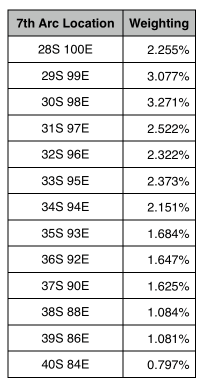
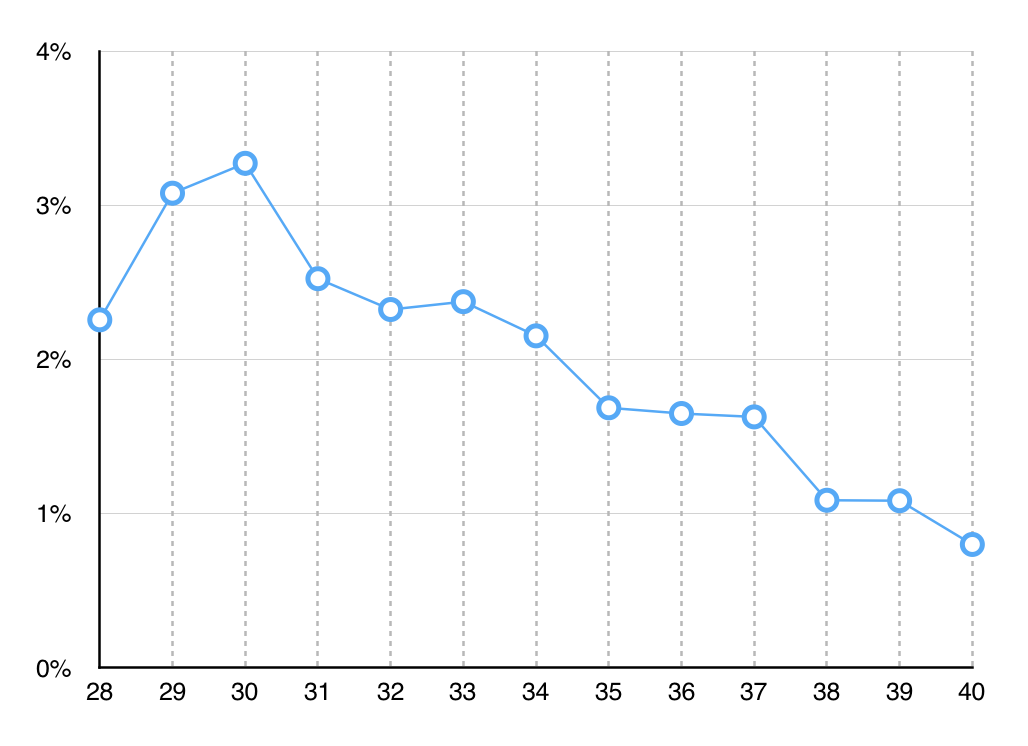
Using Method (2), the single probability summed for each of the nine debris finds shows a peak at 29S 99E. The graph below shows another peak at 34S 94E, but this does not fit all debris finds (i.e. although the summed probabilities may render a large result, some end locations/find locations are found to have a zero probability in the Adrift model).
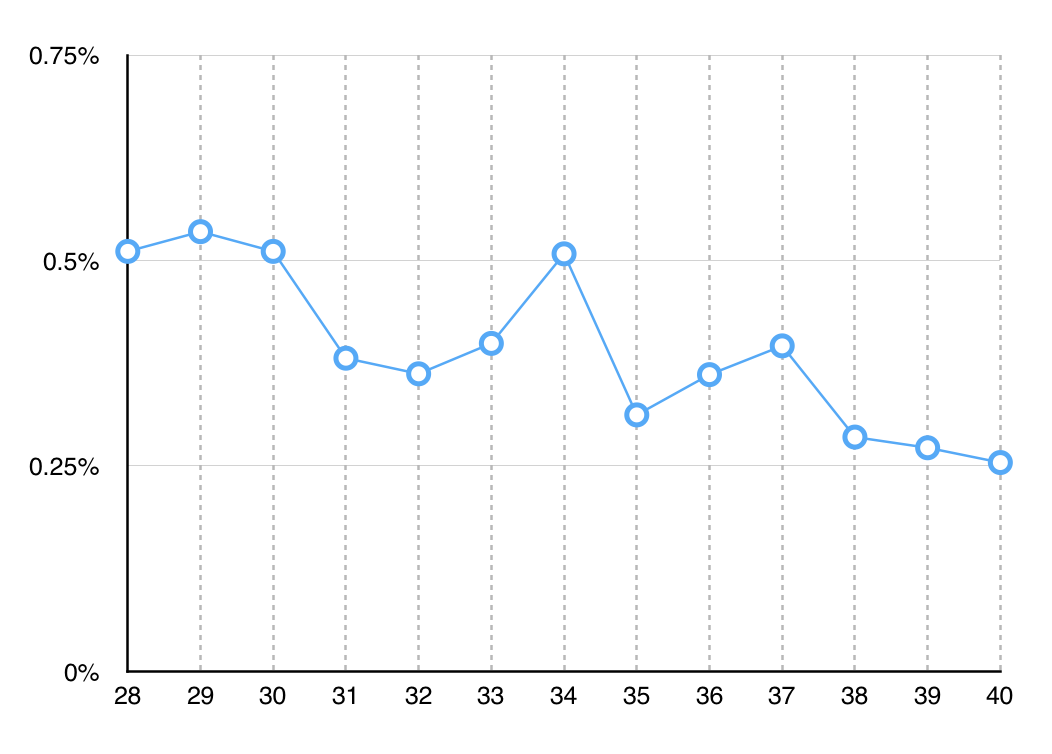
Only two putative MH370 end points on the 7th Arc fit all the debris finds, as indicated in the table below: 29S 99E and 30S 98E.
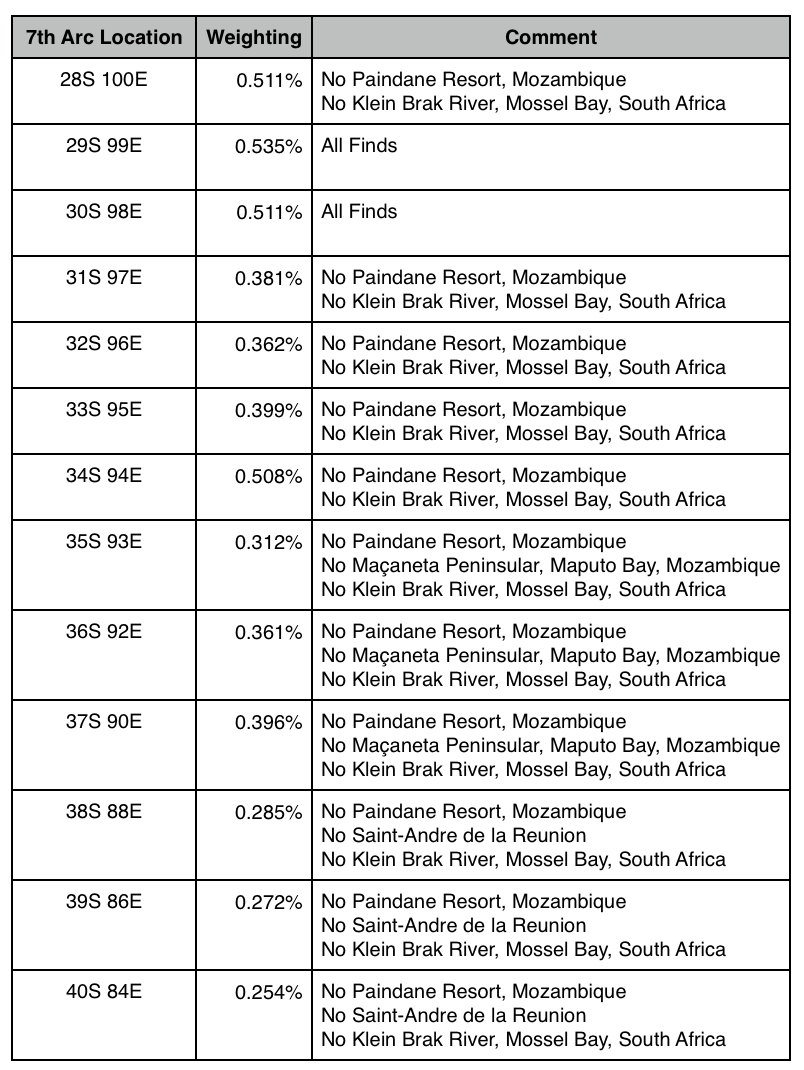
Using Method (2), I checked whether there was a possibility that the MH370 end point was either inside or outside the 7th Arc.
There was a clear peak or hot spot at 30S 99E just outside the 7th Arc, almost twice any peak along the 7th Arc, as shown in the following table (red: geographical bins along the 7th Arc; green: the bin containing the peak probability).
There was a clear peak or hot spot at 30S 99E just outside the 7th Arc, almost twice any peak along the 7th Arc, as shown in the following table (red: geographical bins along the 7th Arc; green: the bin containing the peak probability).
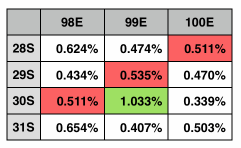
Discussion
The debris find at Mossel Bay, South Africa by Schalk Lückhoff and then 3 months later by Neels Kruger, as well as the find at Paindane Resort, Mozambique by Liam Lotter, fit only this hot spot and surrounding cells as a point of origin.
The indicated average drift speed of the recovered debris is 0.37 knots, the maximum speed being 0.68 knots.
The map below shows the fastest drift from 30S 99E using the Adrift model. The yellow diamond shows the location of 30S 99E (i.e. the MH370 end point indicated above). The yellow squares give the mean locations of drifting debris after the stated number of months in each case. The green circles are the locations of the debris finds.
The debris find at Mossel Bay, South Africa by Schalk Lückhoff and then 3 months later by Neels Kruger, as well as the find at Paindane Resort, Mozambique by Liam Lotter, fit only this hot spot and surrounding cells as a point of origin.
The indicated average drift speed of the recovered debris is 0.37 knots, the maximum speed being 0.68 knots.
The map below shows the fastest drift from 30S 99E using the Adrift model. The yellow diamond shows the location of 30S 99E (i.e. the MH370 end point indicated above). The yellow squares give the mean locations of drifting debris after the stated number of months in each case. The green circles are the locations of the debris finds.
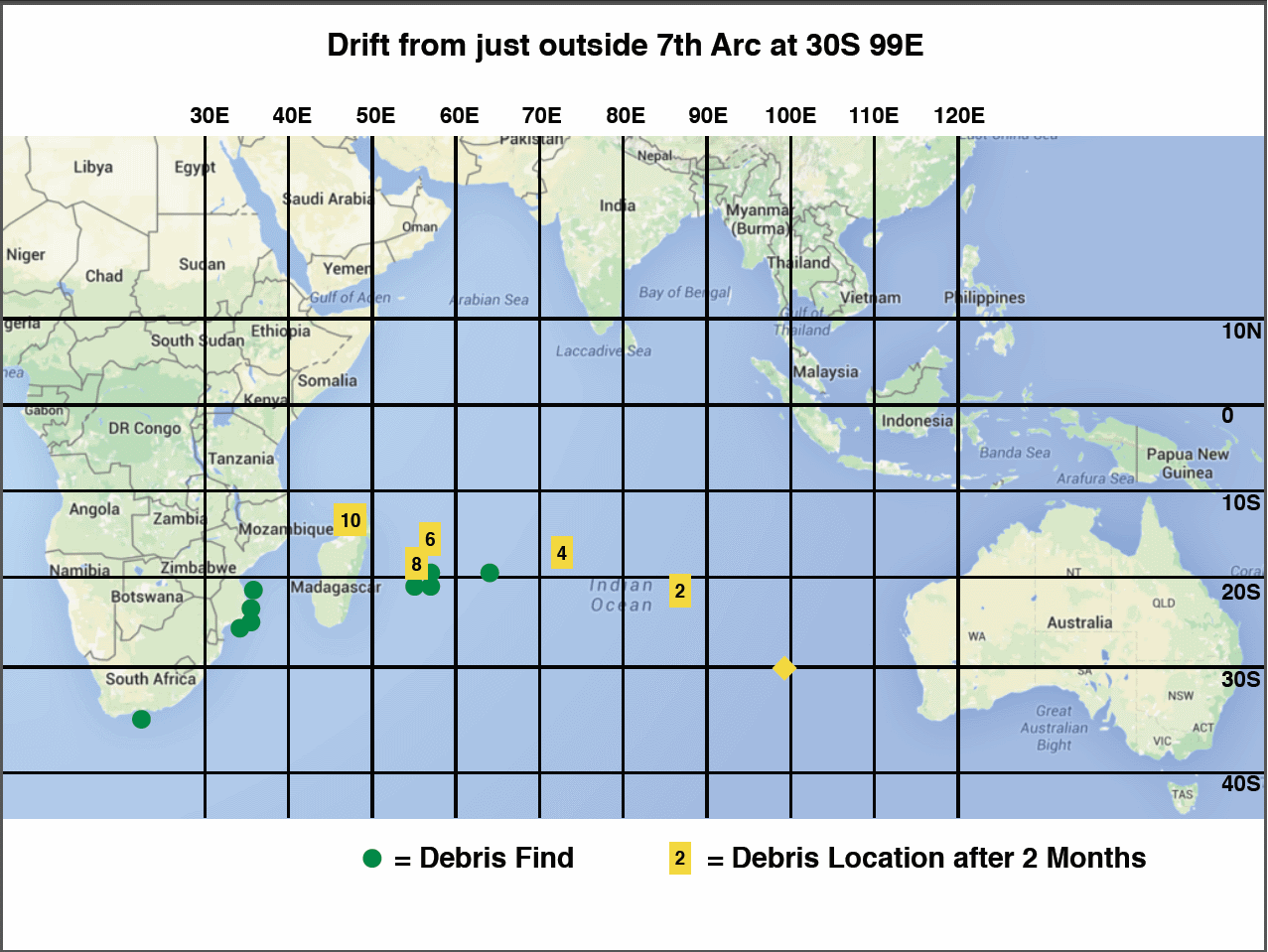
On this basis it would seem likely that most of the drift items have reached the places where they were found several months before they were identified (i.e. they may have spent some considerable time on or near the coastlines/beaches).
For MH370 to have crashed at near 30S two possibilities immediately suggest themselves: either the flight south was “low and slow”, or the path of MH370 included a loiter around Sumatra and the Andaman Islands before heading south. The latter case would require that although the BFO data shows a southerly direction at 18:40, subsequently MH370 circled back before finally heading south.
Victor Iannello has suggested a third possibility: that the plane turned toward the south later than 18:40, and the BFO value at 18:40 is the result of a descent. This allows cruise speeds for the entire path and no loiter. It is interesting that the region around 29-30S was the hot spot suggested by the ATSB in their June 2014 report, in which the BFO at 18:40 was ignored for unknown reasons. Perhaps the ATSB was right after all, to initially ignore the BFO at 18:40.
Don Thompson has noted that a lower flight level may have been an intentional consideration: the cruise altitudes of flight routes from Australia to the Middle East would be in the path of an aircraft (i.e. MH370) heading south from its final major turn, and adopting a lower altitude would avoid the possibility of a collision.
Conclusion
The area around 30S 99E should be considered as a hotspot for underwater searching, as soon as all nine debris finds are confirmed as from MH370.
The area around 30S 99E should be considered as a hotspot for underwater searching, as soon as all nine debris finds are confirmed as from MH370.
It is noted that drift modelling such as that employed here of necessity contains various vagaries and conditional outcomes. Alternative drift models should be used to check the above results, and it is urged that others should use such models so as to verify (or not) the results obtained here.
The possibility still remains that some contingent events (e.g. particular storms) may have made it feasible for the debris items that have been found in South Africa and Mozambique to have started out further south than 30S (e.g. the subsidiary peak near 34S mentioned above), but the discovery of the latest four items in Mauritius and Mozambique (yet to be confirmed to be from MH370) adds weight to the previously-stated result from drift modelling that MH370 appears unlikely to have crashed to the south of 36S.
Acknowledgements
I am indebted to Dr Erik van Sebille of Imperial College, London, and the Adrift organisation.
I am also indebted to Henrik Rydberg, Mike Exner, Victor Iannello and Don Thompson of the Independent Group for their helpful suggestions in preparing this paper.
Acknowledgements
I am indebted to Dr Erik van Sebille of Imperial College, London, and the Adrift organisation.
I am also indebted to Henrik Rydberg, Mike Exner, Victor Iannello and Don Thompson of the Independent Group for their helpful suggestions in preparing this paper.